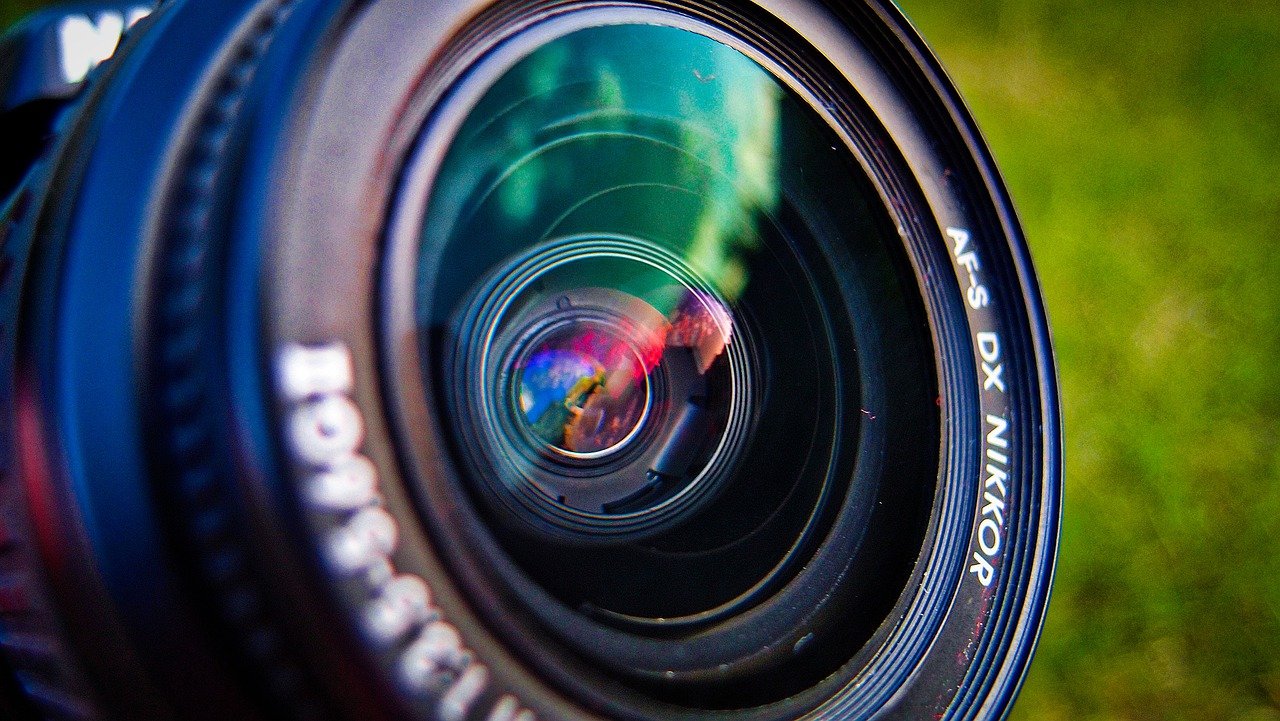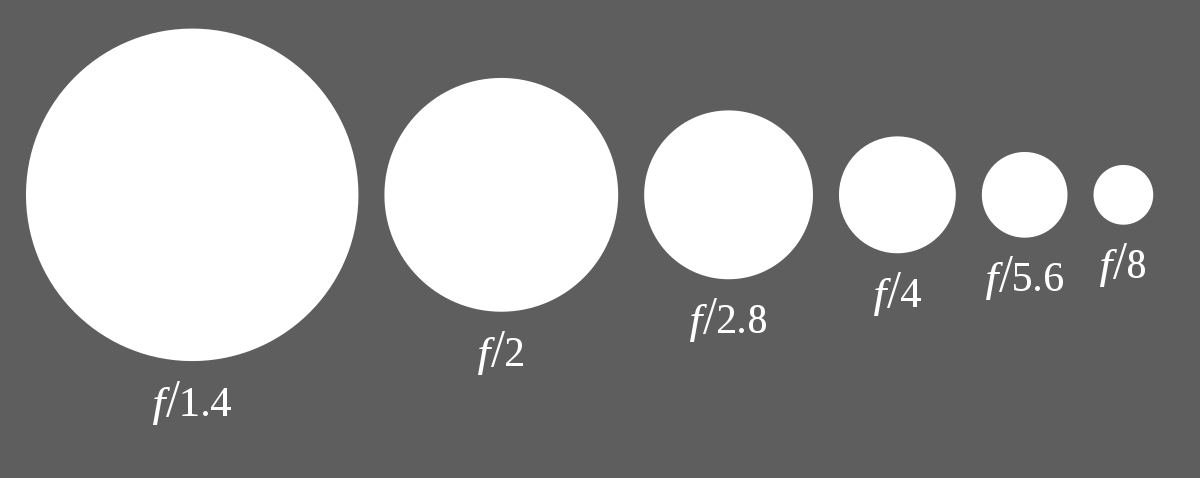What is an F-stop?
F-stop is the term used for aperture size in photography. The aperture is the hole that light travels through in the lens. F-stop is measured in f-stops, and each number equals a halving or doubling of the amount of light allowed into the camera. This means that an f-stop of 8 allows in half as much light as an f-stop of 4, and an f-stop of 16 allows in twice as much light as an f-stop of 8.
F-stop and aperture size are related to the depth of field in a photograph. The smaller the aperture, the greater the depth of field. This is because a small aperture causes more of the scene to be in focus. A large aperture causes less of the scene to be in focus.
Full-stop, 1/2 stop, and 1/3 stop
Every f-stop is half or doubles the size of the previous one. If you are using full-stop increments, each f-stop is one-stop lighter or darker. However, if you are using 1/3 stop increments, each f-stop is two-thirds of a stop lighter or darker than the one before it.
This means that every third step on the aperture ring is different by this margin and a half and third steps can't be used since there is no such thing as a 1/6th of a stop increment. The same applies to shutter speed; if your camera has shutter speeds rounded to 1/2s and 1/3s then you cannot set them to 1/4s and there will only be full stops between each shutter speed.
Aperture size is also related to the amount of blur in a photograph. The smaller the aperture, the more blur will be in the photograph. This is because a small aperture causes less of the scene to be in focus. A large aperture causes more of the scene to be in focus.
Depth of field and f-stop

The depth of field is the distance in front of and behind the subject that is in focus. The greater the depth of field, the more of the photograph that will be in focus. The smaller the aperture, the greater the depth of field. F-stops and aperture size are related to the depth of field in a photograph.
Shutter speed and f-stop
Shutter speed is also related to the amount of blur in a photograph. The slower the shutter speed, the more blur will be in the photograph. This is because a slow shutter speed causes the image to be exposed for a longer period of time, which leads to more motion blur. A fast shutter speed causes less blur because the image is exposed for a shorter period of time.
ISO and f-stop
ISO affects the brightness of an image. The higher the ISO, the brighter the image will be. The lower the ISO, the darker the image will be. This is because ISO is how sensitive your camera's sensor is to light. The lower the ISO, the less sensitive the sensor is and the more noise will be in the photograph. The higher the ISO, the more sensitive the sensor is and the less noise there will be in the photograph.
List of different f-stops and their relation to aperture, lens, and field of depth
- f/1.4: This is as small as the aperture on most lenses gets. Aperture size and f-stop are related; the higher the f-stop, the smaller the aperture, and vice versa.
- f/2: An f-stop of 2 means that the aperture is half its maximal size. It lets in twice as much light as an f-stop of 1 (which would be an f/1).
- f/16: An f-stopped down to 16 results in a very small hole through which light must travel to get to your camera's sensor or film. It allows only 1/125s worth of exposure before getting too bright for most cameras' capabilities (not all sensors can handle such a small aperture, but most can).
- f/2.8: An f-stop of 2.8 means that the aperture is twice its maximal size. It lets in 4 times more light than an f-stop of 1 (which would be an f/1).
What do all those numbers mean?
Such numbers as 1.4 or 22 stand for focal points. A lens has many focal points, but the number shown on the camera is always half of that number (except in cases where it doesn't end with .5). The smaller the number, the larger the opening between the two pieces of metal. The greater the number, the smaller it gets. For example, an aperture of 2 will allow 4x more light to get through than an aperture f/4.
Depth of field and depth of focus
The depth of field is closely related to the depth of focus; both can be affected by f-stop, shutter speed, and ISO. Let's take a look at each one individually:
1) Depth of field: This refers to how much will be in focus in front of your subject and behind your subject. It can be affected by the aperture size ( the smaller the aperture, the greater the depth of field ), camera to subject distance ( the further away from your subject, the shallower the depth of field ), and focal length of your lens (the wider the lens, the shallower the depth of field).
2) Depth of focus: This is how much will be in focus in front of and behind your subject. It can be affected by aperture size (the smaller the aperture, the greater the depth of focus) and focusing distance (the closer you are to your subject, the greater the depth of focus).
Both depths of field and depth of focus are measured in inches or millimeters.
How can f1/22 be a less aperture than f1/8?
Remember that the denominator (bottom number) in a fraction is how many times the top number goes into the bottom number. So, for f1/8, the top number is 1 and the bottom number is 8. This means that 1 goes into 8 8 times.
For f1/22, the top number is 1 and the bottom number is 22. This means that 1 goes into 22 22 times. Because there are more divisions in the bottom number when using 1/22 as the f-stop, this results in smaller aperture size and less light getting through to your camera's sensor or film.

What lens would be better for you?
It depends on what you're looking for in a lens. If you want a lens that has a large aperture (which will give you a shallow depth of field) and is good for low-light situations, then you'll want to look for a lens with an f-stop of 1.4 or 2.8. If you want a lens that has a small aperture (which will give you a greater depth of field) and is good for landscapes, then you'll want to look for a lens with an f-stop of 16 or 22.
Remember, though, that all lenses are not created equal; just because a lens has a large aperture doesn't mean it's going to be the best lens for your needs. You should always do your research and read reviews before making a purchase.
If you want to take high-quality photos, invest in an expensive professional DSLR. If you just want to capture memories and don't care too much about the quality of your photo, a basic point-and-shoot will be fine for your needs.
FAQs:
Should I buy a prime or a zoom lens?
Again, this question can only be answered by answering another question: What are you going to use the lens for?
Prime lenses have one aperture setting (which means all pictures taken with that lens will have the same aperture size) and they are good for certain types of photography (like landscapes or weddings). Zoom lenses have many aperture settings (so all pictures taken with that lens will have different sizes) and can be used in any situation.
Do all cameras have their F-stop?
No, all cameras don't have the same f-stop. Cameras get their f-stop from brands. For example, Canon has .3 lower aperture than Nikon, so if you put a Canon lens on a Nikon camera it automatically gets an additional 3 smaller aperture settings.
Does changing the ISO change your depth of field?
Yes! If you use a higher ISO setting the less light will be let into your camera's sensor, resulting in having to change your aperture size (either making it larger or smaller). So yes, changing the ISO will always affect your depth of field.
How do I take a picture of the moon?
The simplest way to take a photo of the moon is by using your camera's zoom. You should also try to use as low an f-stop as possible, as this will give you a greater depth of field, and thus more of the moon will be in focus. If you really want to capture a high-quality image, though, you'll need to invest in lenses made specifically for photographing objects at night or those extremely far away from you.
Will f-stop affect the quality of my photos?
Yes! The aperture setting determines how much light your camera takes in, so using a higher f-stop will result in less light being taken in by your camera. This is why you'll want to use a low aperture when you're taking pictures at night or indoors without access to good lighting.

How can I take great photographs?
There are many factors that go into taking great photos. A great composition is extremely important, as are various other elements like timing, symmetry, and balance.
Most importantly, though, you have to master your equipment (which includes knowing what aperture size to use for specific situations) before you can hope to capture the perfect image. If you'd like some tips on mastering photography techniques, check out our articles on different photography genres!
Will high f-stop make photo shooting slower?
The speed of the camera shooting is not really determined by f-stop. F-stop only affects how much light goes into the lens and how shallow or deep the depth of field will be. If you are using a high ISO, your photos will be grainier but faster.
Bottom line
In conclusion, the f-stop is an extremely important setting on your camera that determines how much light will be let in. It's therefore important to understand how the f-stop works and what situations are best suited for each aperture size. By understanding these concepts, you'll be able to take great photos with ease!